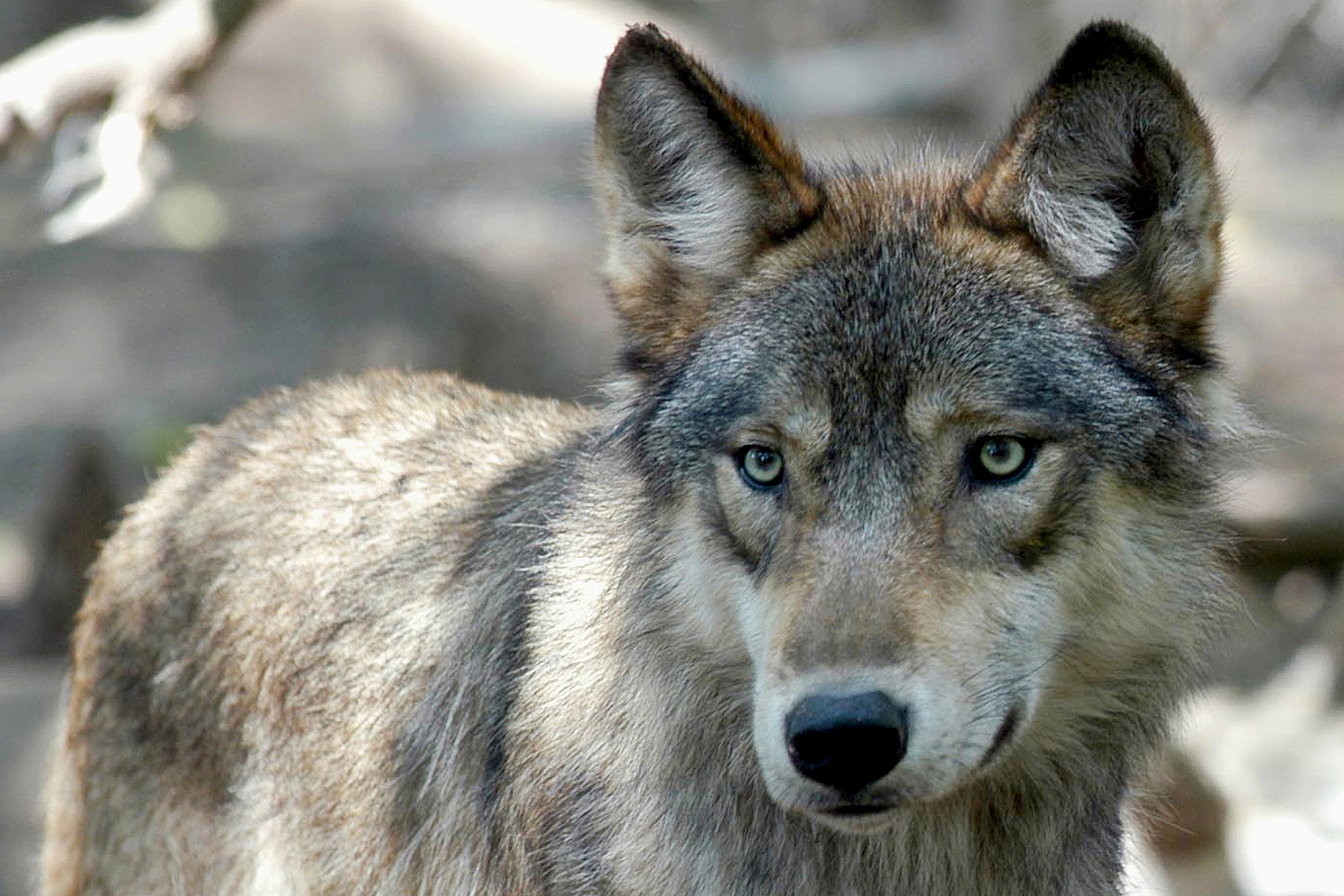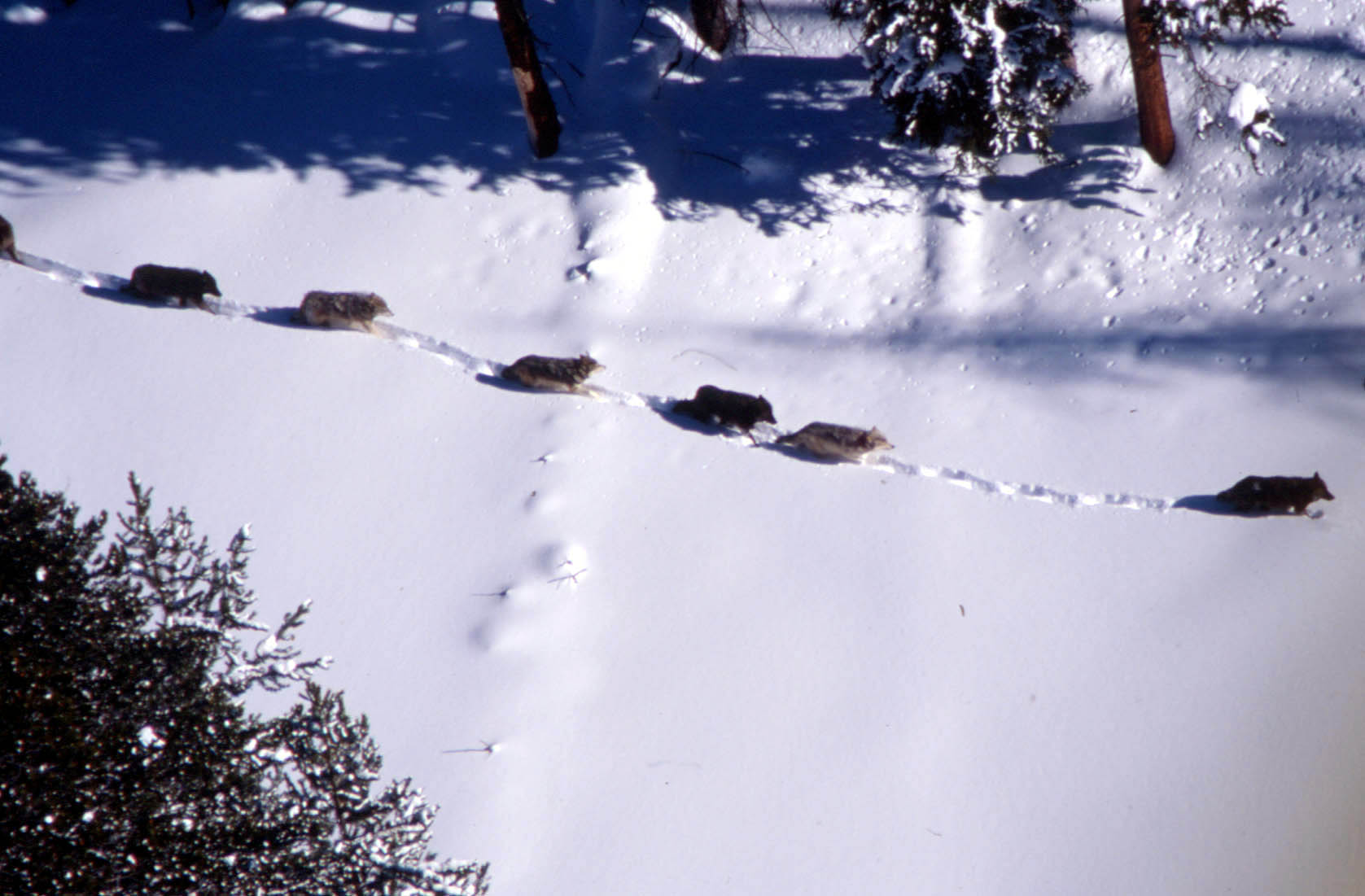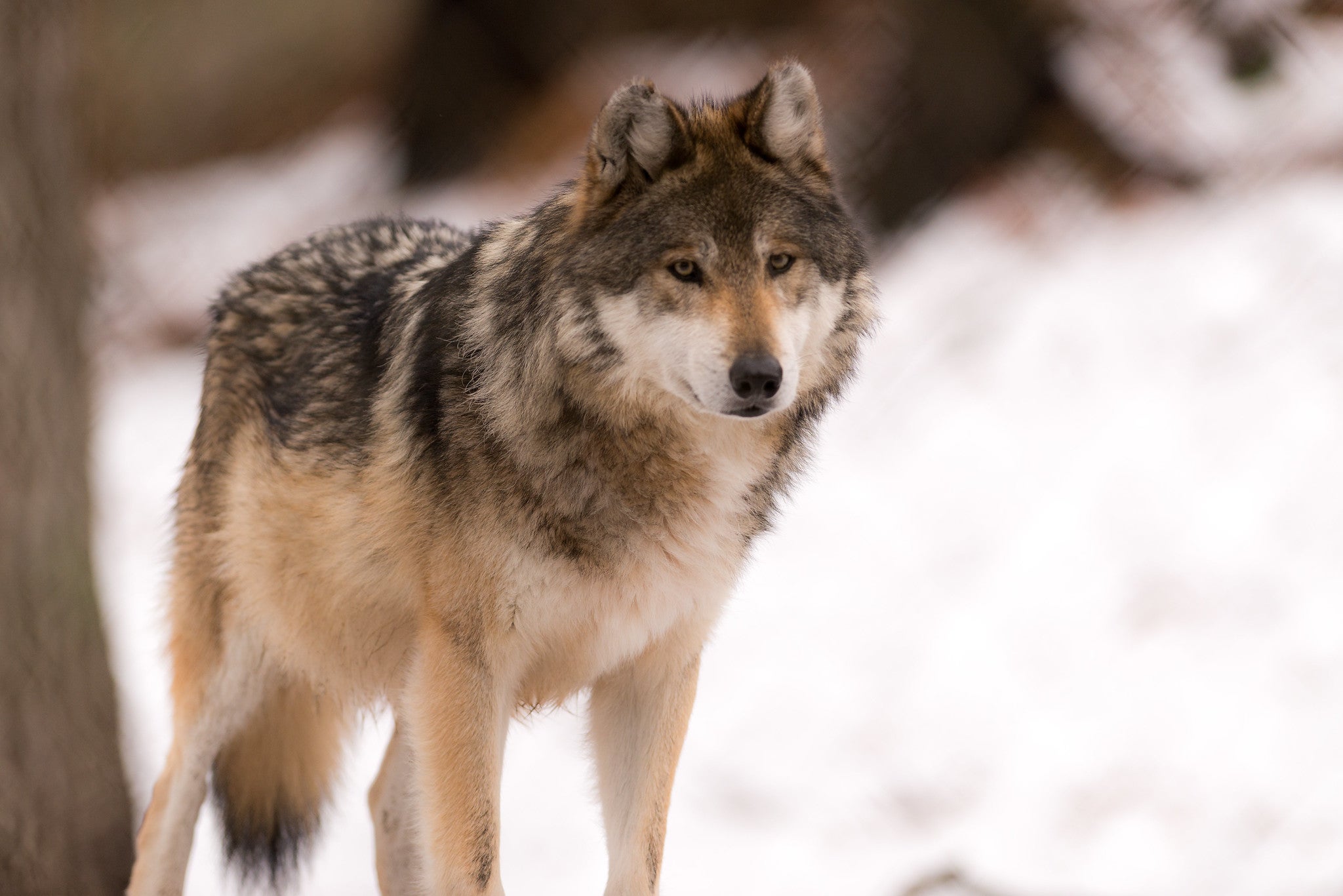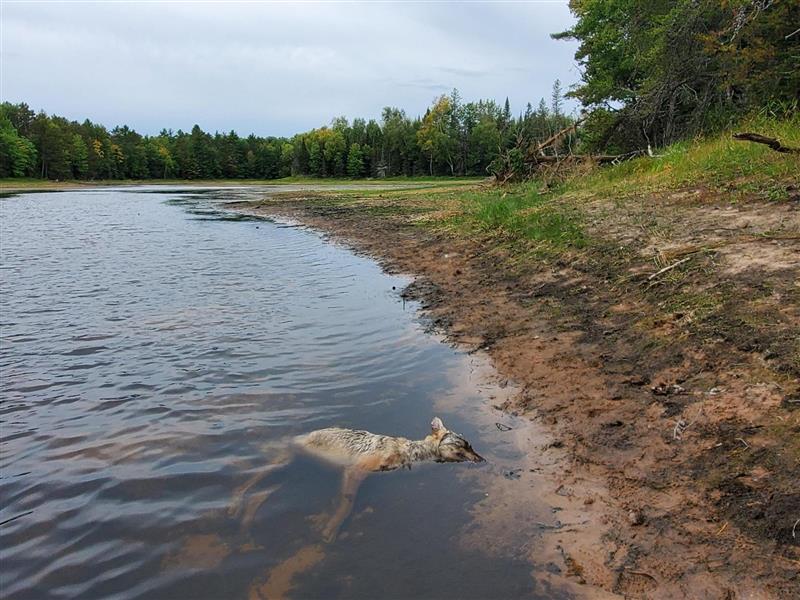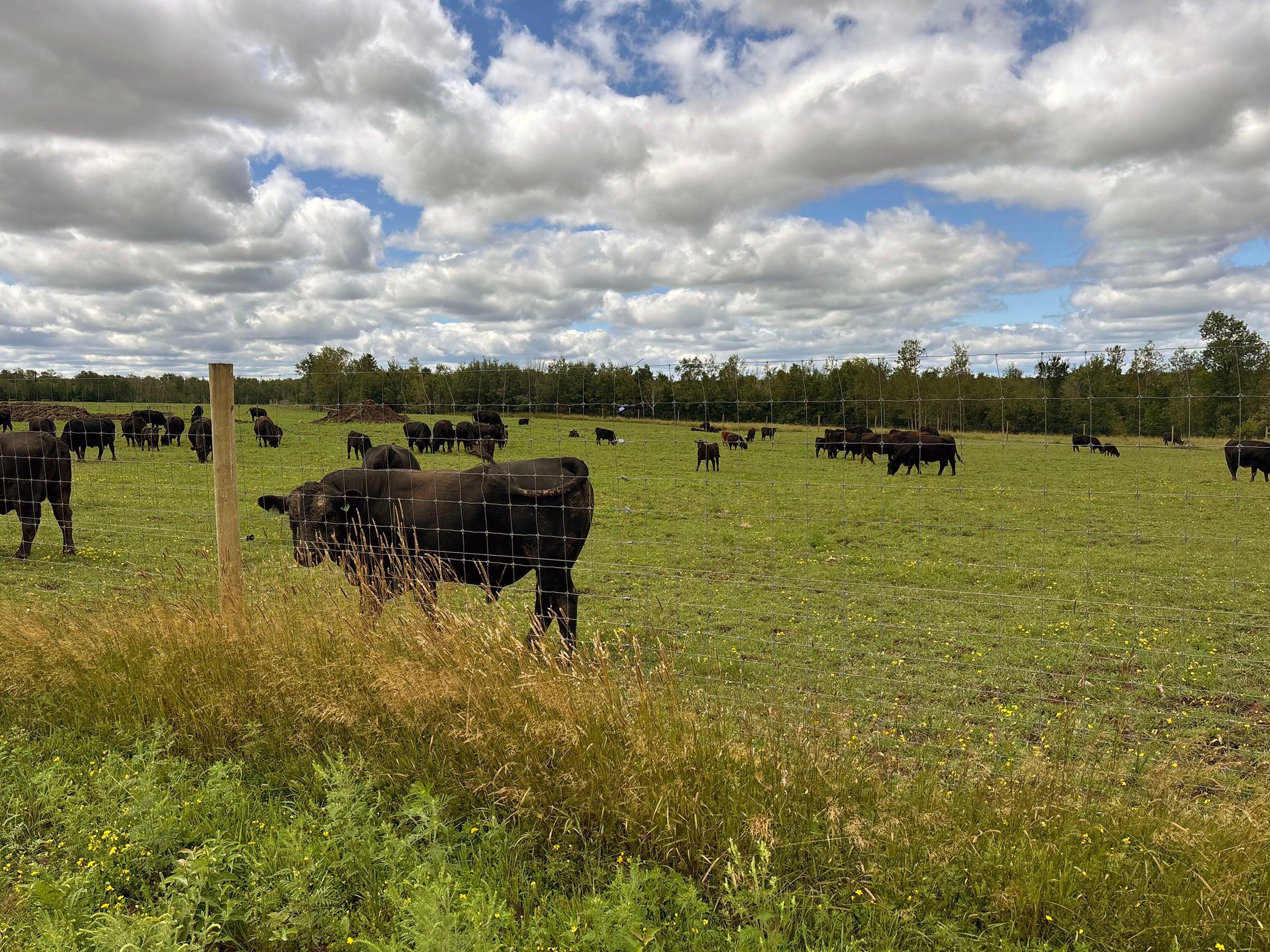With hundreds of wolves now in Wisconsin, a state board recently approved a new plan for managing the controversial carnivores.
The Natural Resources Board sets policies for the state Department of Natural Resources and approved a new wolf management plan Oct. 25.
The final version of the plan is expected to be published in the coming weeks, said Randy Johnson, a DNR large carnivore specialist. In the meantime, a draft version is available on the DNR’s website.
Stay informed on the latest news
Sign up for WPR’s email newsletter.
Johnson recently joined Wisconsin Public Radio’s “Central Time” to discuss how the new plan differs from earlier wolf management plans.
This year, the DNR has received over 100 wolf complaints with 77 of those being verified by the DNR and federal wildlife officials. That rate of complaints is typical each year, Johnson said.
Most complaints are related to livestock problems, Johnson said. Others are typically hunting dog complaints. The state DNR has never received a report of a wolf attack on humans, in modern times, Johnson said. A handful happened in North America over the past century.
On “Central Time,” Johnson also discussed how to prevent repeated wolf attacks on livestock and if Wisconsin can expect another wolf hunt.
The following was edited for brevity and clarity.
Rob Ferrett: What kind of wolf management plan has been in place up until now?
Randy Johnson: We have had a management plan for wolves in place going back to the 1980s. But the most recent iteration was first written and approved in 1999. It got a small overhaul in the late 2000s. Much of that plan was really focused on wolf recovery in the state and trying to bring back this native species that had been extirpated in the 1900s. The plan talked about trying to grow those populations. How do we deal with conflict in certain situations? But as we know, the wolf population has grown and recovered, and that’s where this new plan comes into place.
RF: The gray wolf has been listed and unlisted as endangered in states like Wisconsin over the years. How does that affect wolf management here?
RJ: It does go back and forth, but they are currently still on the federal endangered species list. This has a lot of implications on wolves and wolf management in the state. Probably the two most impactful pieces are the availability of public harvest of wolves in the state and lethal conflict abatement options in the case of livestock conflicts or things like that.
So, when they’re on that federal list of endangered species, those options are off the table. And when they’re off the list, then those options become available.
RF: Now, what does the latest management plan look like?
RJ: Bringing it full circle, this plan really moves our management program and focus into alignment with where the population is at today. It recognizes that the population has biologically recovered, and it outlines the management program for a recovered species. This includes our conflict program, potential wolf hunting seasons, public education and research needs, and collaboration.
A big part of any management plan is trying to outline what the population is going to look like — how many, where in the state, those types of things. Through this process, we have moved away from identifying a specific number of wolves as our management goal and instead are focused more explicitly on the things people care about — like ensuring there’s a healthy population — but also being responsive when conflicts arise.
We’ve outlined a process called adaptive management … We expect the wolf population to range somewhere in this 800 to 1,200 size but recognize it can be really variable depending on where you’re at in the state.
RF: Parts of northern Wisconsin have worried that the wolf numbers are too high. People worry about pets and livestock. How do you assess those points?
RJ: No question, wolves can and do cause some conflicts. Often, those conflicts — those impacts, if you will — are disproportionately felt by those living, working and recreating among wolves, in our case in northern Wisconsin. It’s important to recognize that and to try to work toward improving that situation.
But at the same time, the science, our own data and our experiences show that some of these conflicts are not well correlated with the overall statewide number of wolves. This comes back to their biology. They live in packs in territories that occupy certain spaces. And certain packs can learn to cause issues with livestock or pets whereas most packs don’t. Having the ability to deal and resolve with those conflicts where they’re occurring is the most effective way, ultimately, to try to reduce some of those issues. Whereas again, most of the packs don’t get into those issues. So, it’s having that site-specific abatement, which is a really important tool.
READ MORE: Natural Resources Board approves DNR wolf management plan
RF: What tools are there to deal with repeated attacks on livestock?
RJ: We unfortunately do see these situations arise. We call them chronic farms, where they have repeated depredations or conflicts, such as livestock being killed or harassed. Currently, with wolves being listed as federally endangered, we don’t have access to lethal controls. We have non-lethal tools. We have financial compensation. Those non-lethal tools can range from electric fencing to fladry, which is fencing related to auditory flashing lights.
But in all of these cases, unfortunately, wolves can become conditioned to these (non-lethal tools), and they lose their effectiveness through time. That’s where the importance of the lethal controls comes in. … Sometimes the last step we can use is to lethally remove some of those wolves to get those conflicts to stop.
RF: If the gray wolf leaves the endangered list, how does a wolf hunt fit into the management plan?
RJ: If and when wolves become delisted in the future, state law requires Wisconsin to implement a wolf season. A big focus of this updated wolf management plan is addressing that reality, looking at what a future season would look like. How can we improve it? How can we meet state quotas? What lessons have been learned during past wolf seasons — as recently as 2021 but also there were three seasons held back in 2012, 2013 and 2014.
Wisconsin Public Radio, © Copyright 2025, Board of Regents of the University of Wisconsin System and Wisconsin Educational Communications Board.
